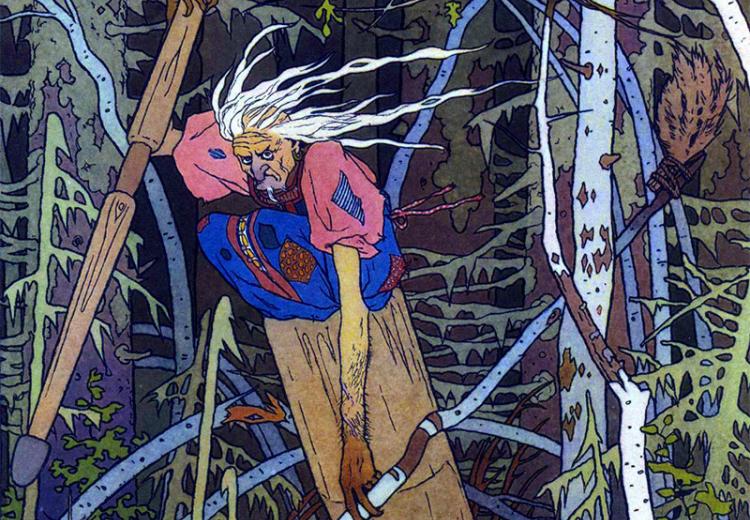The Magical World of Russian Fairy Tales

Baba Yaga the witch, a staple of Russian fairy tales.
Many children are familiar with Snow White's evil stepmother and her poisonous apple, Cinderella's fairy godmother, and the witch in the gingerbread house waiting to eat Hansel and Gretel for dinner. But have they met Baba Yaga, the old crone who is both wise and cruel, who lives in a house standing on chicken legs, and whose servants bring with them the day, sunset and the night? Baba Yaga, the iconic witch of Slavic fairy tales, is one of the characters students will meet in this journey through Russian fairy tales.
This lesson, intended for 3rd grade children, focuses on several imaginative and exciting Russian fairy tales: Vasillisa the Beautiful, Prince Ivan and the Grey Wolf, The Frog Princess, Fenist the Bright Falcon, and The Story of BabaYaga. Students will review some of the common fairy tale elements that are present within these stories, which also may remind them of more familiar European fairy tales. Students will also discuss these stories' distinctive characters and plots. This lesson will work well as an extension to EDSITEment's lesson plan Fairy Tales Around the World. This lesson could also be used as an introduction to fairy tales for students who already have some knowledge and experience reading the more familiar European fairy tales, or who have an interest in learning about Russia and its folk heritage.
In the lesson, students will listen to stories read aloud and then re-read some of them individually in small groups. Students will demonstrate their comprehension of the stories by working in small groups to create skits, illustrations, and comic strips to re-tell the stories. Students will then participate in guided group discussions to analyze themes and motifs of the fairy tales. They will compare and contrast these stories with better-known western European fairy tales such as Hansel and Gretel or Cinderella.
Guiding Questions
What are some special kinds of magic and wonder in Russian fairy tales?
How do Russian fairy tales compare to other kinds of fairy tales?
Learning Objectives
Give a simple definition of a fairy tale.
Identify some typical elements of a fairy tale, such as magical journeys, quests, evil and good characters, royal characters and peasants, talking animals, riches and good fortune as a reward for the good characters, death for the evil characters, and repetitive events.
Re-tell, in their own words, a Russian fairy tale.
Verbally describe and illustrate the iconic Russian witch, Baba Yaga.
Describe some similarities and differences between Russian fairy tales and other better known European fairy tales.
